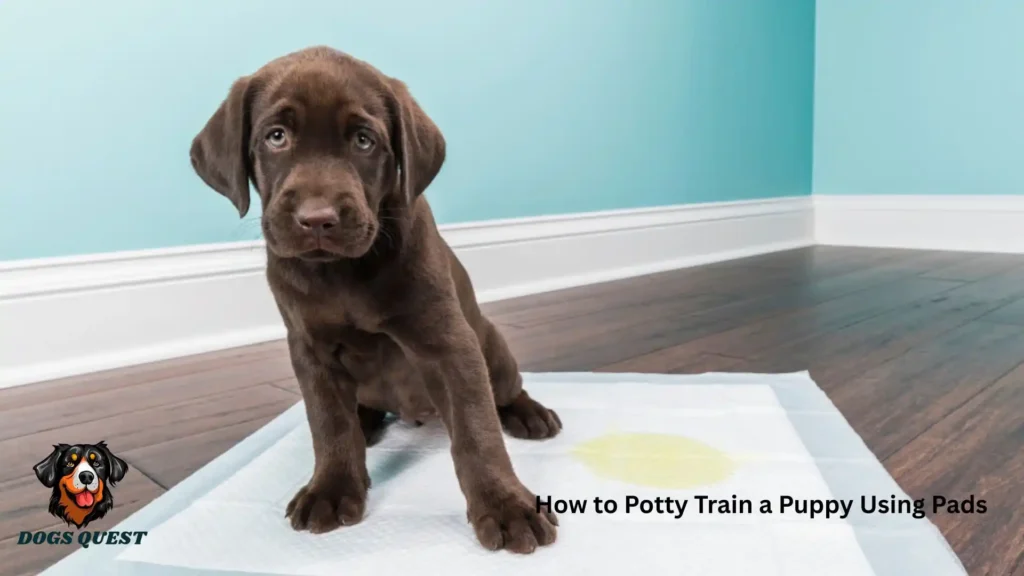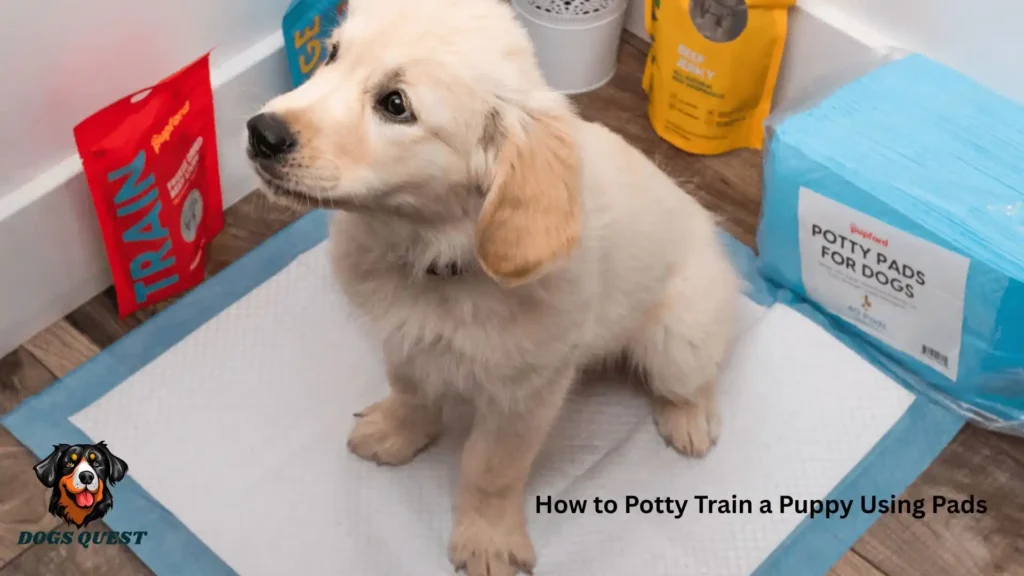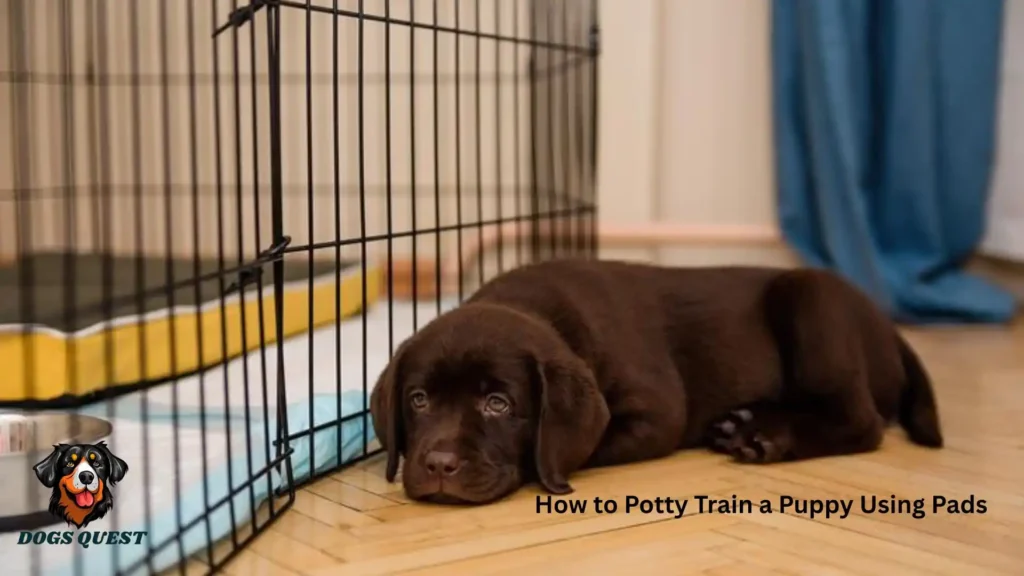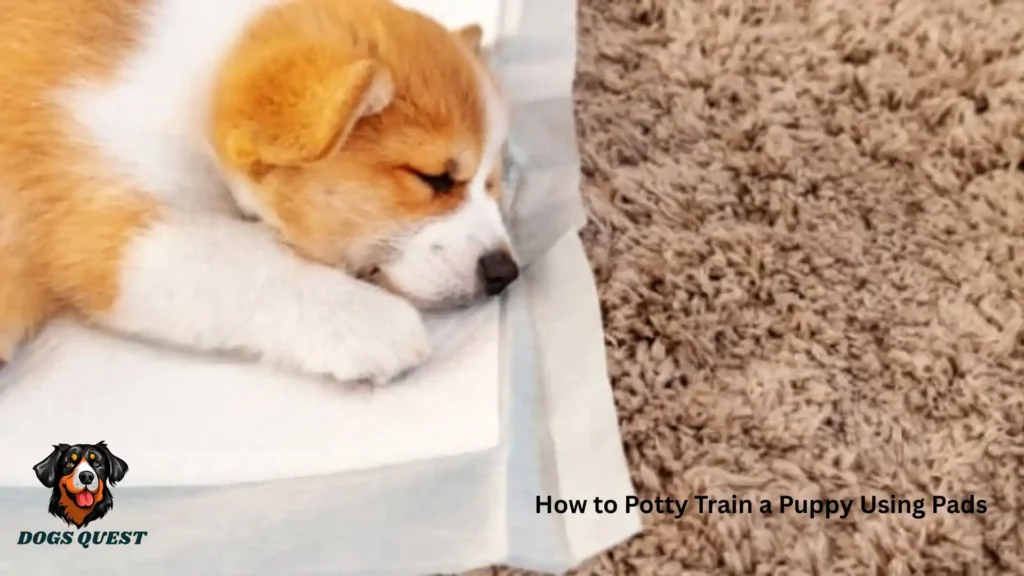Struggling with puppy accidents? Learn how to potty train a puppy using pads in just 3 easy steps. Vet-approved tips, proven schedule & mistakes to avoid for faster results!
Introduction:
Bringing a new puppy home is exciting, but it also comes with challenges—especially house training. Many new pet owners wonder how to potty train a puppy using pads without stress or mess. The good news is that with the right strategy, consistency, and patience, you can train your puppy effectively while keeping your home clean.
In this guide, you’ll learn everything about how to potty train a puppy using pads, including expert tips, step-by-step instructions, common mistakes to avoid, and answers to frequently asked questions.
Why Choosing Puppy Pads Can Make Potty Training Easier

Before diving into the detailed steps of how to potty train a puppy using pads, it’s important to know why pads are such a popular choice among pet owners. They simplify the training process and are especially useful for people living in apartments or those with limited outdoor space.
Indoor Training Made Simple and Convenient
Puppy pads give you a stress-free way to train indoors, which is perfect for apartment living or when outdoor trips are not always possible.
A Helpful Solution for Young Puppies with Small Bladders
Very young puppies can’t hold their bladder for long. Puppy pads give them a designated spot, preventing frequent accidents on your floors.
Reliable Training Option During Harsh Weather
Rain, snow, or extreme heat can make outdoor potty training difficult. Puppy pads provide a dependable indoor alternative.
Step-by-Step Process: How to Potty Train a Puppy Using Pads Successfully
Now let’s go through the exact process of how to potty train a puppy using pads. By following these 10 steps consistently, you’ll set your puppy up for quick success.
Step 1: Select High-Quality Puppy Pads for Best Results
Choose pads that are leak-proof, absorbent, and designed to control odors. A good-quality pad makes training cleaner and more effective.
Step 2: Pick a Permanent Training Location in Your Home
Consistency is key. Select a low-traffic area and always keep the pad there so your puppy learns to associate that spot with potty time.
Step 3: Introduce Your Puppy to the Pad with Guidance
Gently guide your puppy to the pad after naps, meals, and play sessions. Use a cue word like “go potty” to help them connect the spot with the action.
Step 4: Create a Regular Potty Schedule That Fits Your Puppy’s Needs
Puppies thrive on routine. Take them to the pad every 2–3 hours, as well as right after sleeping, eating, or playing.
Step 5: Reward Pad Use Immediately with Praise and Treats
Positive reinforcement is the fastest way to teach. Reward your puppy with affection or small treats whenever they use the pad correctly.
Step 6: Supervise Your Puppy Closely to Prevent Mistakes
Keep a close eye on your puppy during training. Watch for signs like sniffing or circling, which indicate they need to go.
Step 7: Manage Accidents Calmly and Clean Up Properly
Accidents will happen. Clean thoroughly with enzyme-based cleaners and avoid scolding, which may create fear or confusion.
Step 8: Gradually Move the Pad if Transitioning Outdoors
If you want your puppy to eventually go outside, move the pad closer to the door over time, then place it outside before eliminating pads completely.
Step 9: Stay Consistent and Patient Throughout Training
Consistency is the secret ingredient in how to potty train a puppy using pads. Stick with the schedule daily to reinforce good habits.
Step 10: Transition from Pads to Outdoors When the Puppy Is Ready
Once your puppy reliably uses the pad, you can decide whether to continue using them or switch fully to outdoor potty training.
Mistakes to Avoid When Learning How to Potty Train a Puppy Using Pads

Even with the best intentions, many owners make small mistakes that slow down training. Knowing these in advance will save you time and frustration.
Changing the Pad’s Location Too Often Confuses Puppies
Moving pads around early in training creates confusion. Keep them in one consistent spot until your puppy fully understands.
Forgetting to Reward Good Behavior Slows Progress
If you don’t consistently reward correct pad use, your puppy may lose motivation to follow through.
Using the Wrong Cleaning Products Leaves Tempting Odors
Household cleaners may not remove urine scent completely. Use enzyme cleaners to prevent repeat accidents in the same spot.
Key Advantages of Potty Training with Puppy Pads
Training with puppy pads has multiple benefits that make life easier for both puppies and owners.
Cleaner Homes and Less Stress for Puppy Parents
Pads protect your floors and carpets, reducing stress during the early training phase.
A Convenient Training Option for Busy Schedules
For owners with work or school commitments, pads provide flexibility while maintaining structure.
Helpful for Nighttime and Senior Dog Training
Pads are not only great for puppies but also for nighttime use and older dogs with mobility issues.
How Long Does It Usually Take to Potty Train a Puppy Using Pads?

Every puppy is different, but on average, most puppies learn within 2–4 weeks with consistent traininghttps://www.thesprucepets.com/stages-of-puppy-development-2804675. Breed, age, and personality all play a role in how fast they adapt.
Expert Tips for Faster and More Reliable Pad Training
If you want to make how to potty train a puppy using pads even more effective, try these professional tips.
Use Crate Training Alongside Pad Training for Better Results
Dogs naturally avoid soiling their sleeping space. Combining crate training with pads accelerates the housebreaking process.
Monitor Water Intake Before Bedtime to Reduce Night Accidents
Limit water an hour before sleep. This helps puppies avoid nighttime accidents and strengthens bladder control.
Try Puppy Pad Attractant Sprays to Encourage Correct Use
Special sprays are available that encourage puppies to use the pad by scent, making the training process easier.
Making the Transition from Puppy Pads to Outdoor Training

If your end goal is to have your puppy trained outdoors, pads can act as a helpful stepping stone.
- Move the pad gradually toward the door.
- Place the pad outside in a spot you prefer.
- Slowly remove the pad once your puppy is comfortable going outside.
This method eases your puppy into outdoor training without creating confusion.
Final Thoughts on How to Potty Train a Puppy Using Pads
Learning how to potty train a puppy using pads doesn’t have to be stressful or frustrating. With the right supplies, a consistent schedule, positive reinforcement, and patience, you’ll see results in just a few weeks.
Whether you stick with pads permanently or use them as a stepping stone to outdoor training, these 10 steps will give you a reliable and stress-free potty training experience. By following this guide carefully, you and your puppy will enjoy a cleaner, happier home.
Frequently Asked Questions
Q1: Can I train my puppy to use both pads and go outside?
Yes, you can. Just make sure you are consistent with schedules and gradually balance both methods.
Q2: What should I do if my puppy chews the pads?
Try pad holders or switch to washable fabric pads that are harder to destroy.
Q3: Is pad training suitable for large breeds?
It can be, but larger breeds often need to transition to outdoor training sooner.
Q4: How do I stop my puppy from peeing just outside the pad?
Clean up thoroughly and guide your puppy back to the pad immediately. Over time, they’ll learn precision.
Q5: Can older dogs benefit from pad training too?
Absolutely. Pads are great for senior dogs with incontinence or mobility issues.

